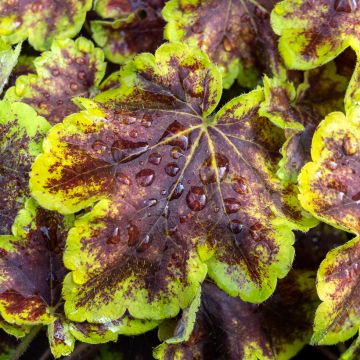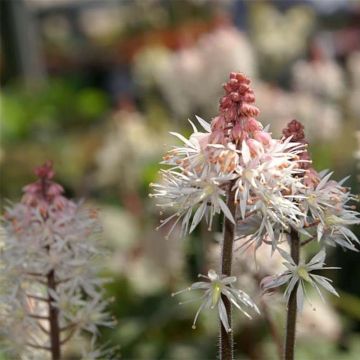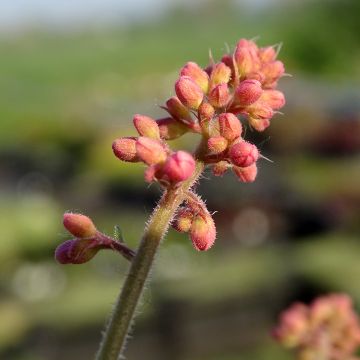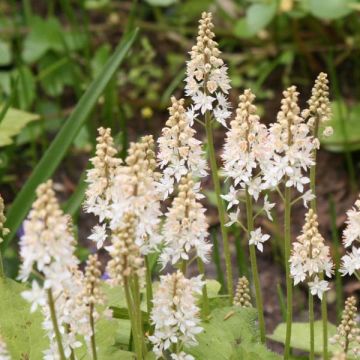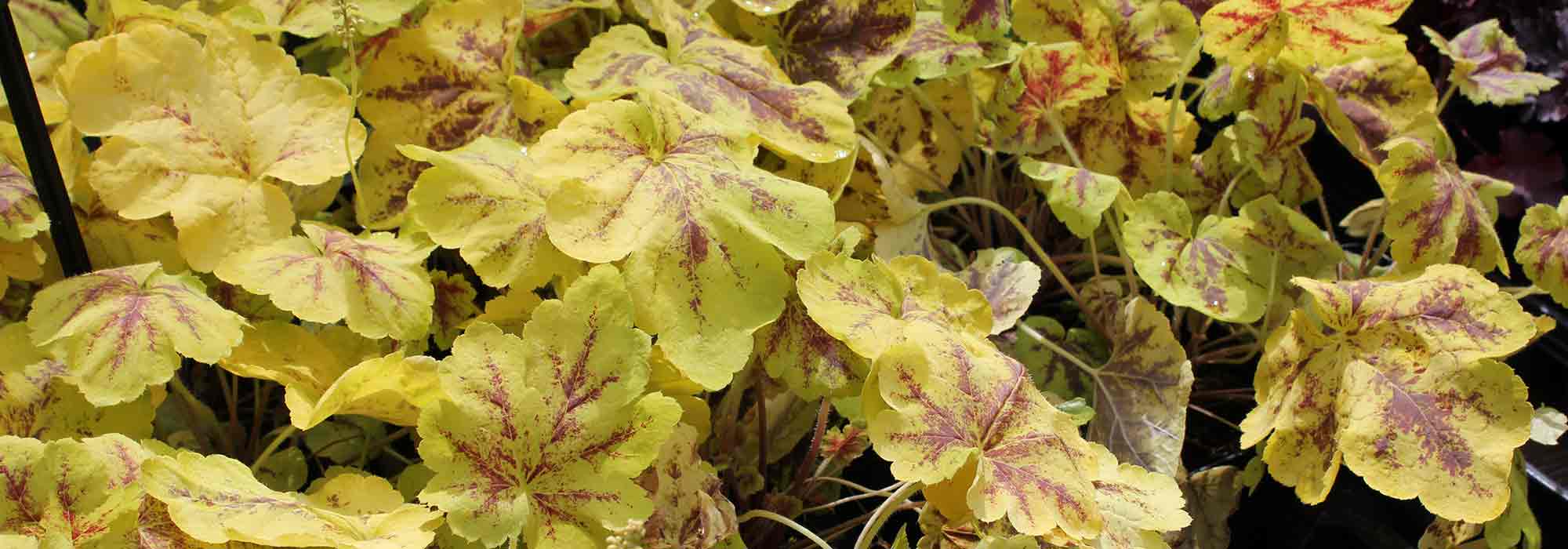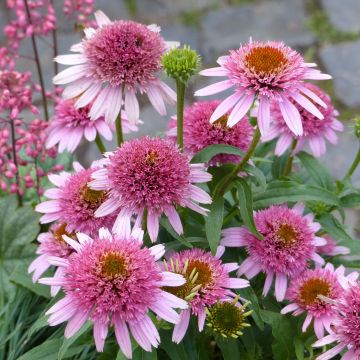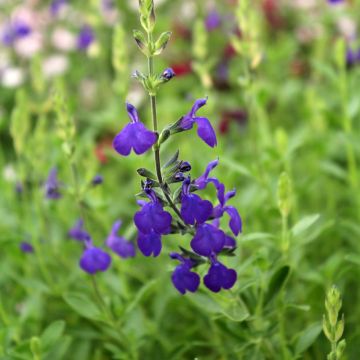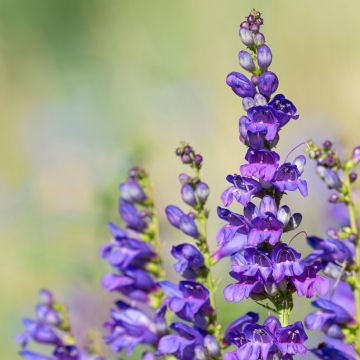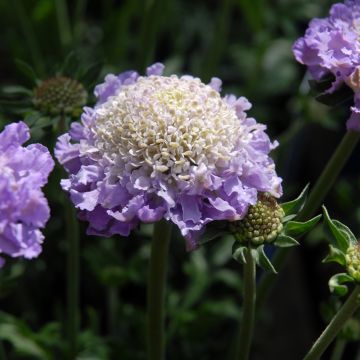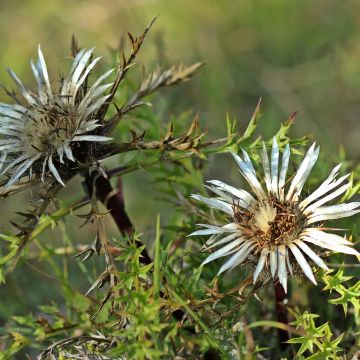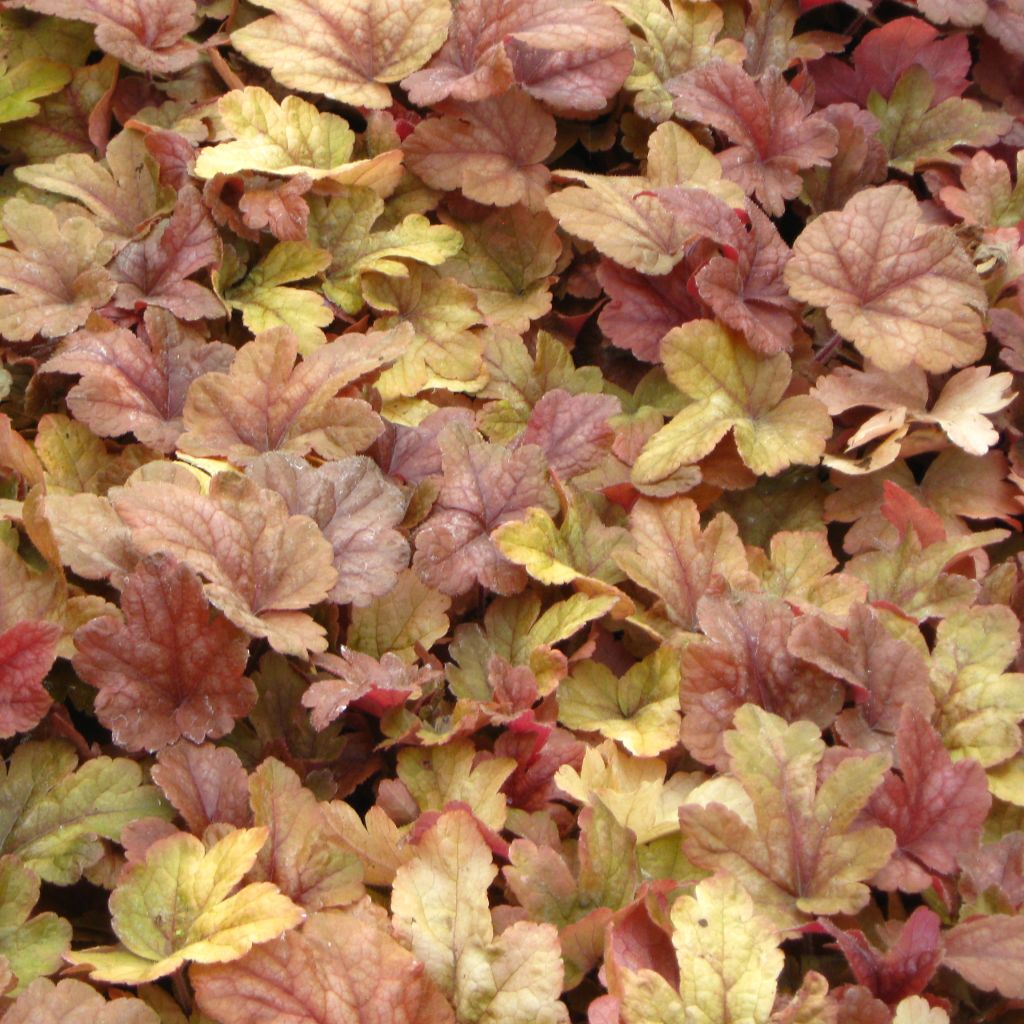

Heucherella Buttered Rum
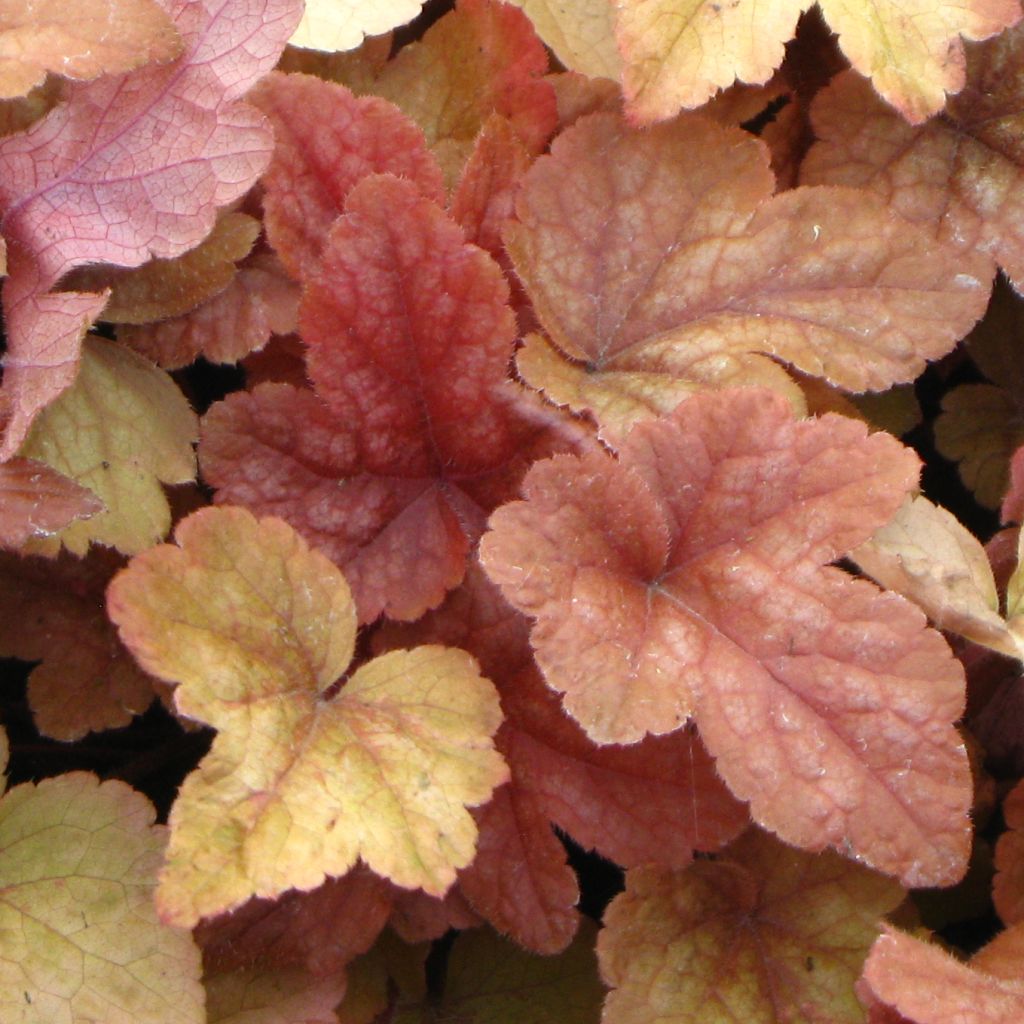

Heucherella Buttered Rum
Heucherella Buttered Rum
(x) Heucherella Buttered Rum
Foamy Bells
I received a pot with 4 leaves of Heucherella Buttered Rum! They were placed in a pot with horticultural compost and regularly watered with rainwater. Today, there are only 3 leaves left and nothing seems to want to grow back! The photo on the plant's page showed a pot with many more leaves.
HERVE B., 18/11/2018
Special offer!
Receive a €20 voucher for any order over €90 (excluding delivery costs, credit notes, and plastic-free options)!
1- Add your favorite plants to your cart.
2- Once you have reached €90, confirm your order (you can even choose the delivery date!).
3- As soon as your order is shipped, you will receive an email containing your voucher code, valid for 3 months (90 days).
Your voucher is unique and can only be used once, for any order with a minimum value of €20, excluding delivery costs.
Can be combined with other current offers, non-divisible and non-refundable.
Home or relay delivery (depending on size and destination)
Schedule delivery date,
and select date in basket
This plant carries a 12 months recovery warranty
More information
We guarantee the quality of our plants for a full growing cycle, and will replace at our expense any plant that fails to recover under normal climatic and planting conditions.
Would this plant suit my garden?
Set up your Plantfit profile →
Description
The Heucherella 'Buttered Rum' is a recent variety with finely-cut foliage, resembling the leaves of maple trees, with red veins. Its changing colour ranges from salmon pink to very warm caramel orange in spring, then turns red at the first frost and takes on a beautiful burgundy coat in autumn. In summer, delicate clusters of white flowers emerge from the foliage. This compact perennial thrives in shade and moist soil.
Belonging to the Saxifragaceae family, Heucherella shares characteristics with its parents. Like Heucheras, it has evergreen foliage (or semi-evergreen, depending on the climate) that is highly decorative. Numerous cross-breeding efforts have preserved the most attractive traits, such as in 'Buttered Rum'. Its numerous leaves (approximately 5 to 10 cm (2 to 4in)) form an attractive clump that easily fits in front of flowerbeds, thanks to its reasonable size (30 cm (12in) by 30 cm (12in)). The lamina of the leaves is beautifully serrated, yet remains rounded, retaining its softness. Its vibrant and warm shades naturally catch the eye and gradually evolve with temperature changes. Its marbled orange color in spring gently turns reddish under the cold, taking on shades of pink-purple at the beginning of winter.
The white flowering occurs in June and July. Graceful stems bearing clusters of small bell-shaped flowers rise above the foliage, standing out distinctly. They bring a sense of lightness and delicacy to the edge of pathways and can thus take over from Primroses and Hellebores.
Like most Tiarellas and Heucheras, Heucherella prefers moist soil and semi-shaded exposures. It thrives in woodland areas and moist rockeries. It prefers a neutral, well-drained soil that is not too heavy. It requires very little maintenance. If winter has been harsh, simply trim the faded leaves.
The colours of Heucherella 'Buttered Rum' blend harmoniously in a border composed of various foliage. You will find complementary colours in the multiple palettes of its relatives. Hostas, perennial Geraniums, and ferns will provide the greens needed to create a multicolored tableau.
Heucherella Buttered Rum in pictures
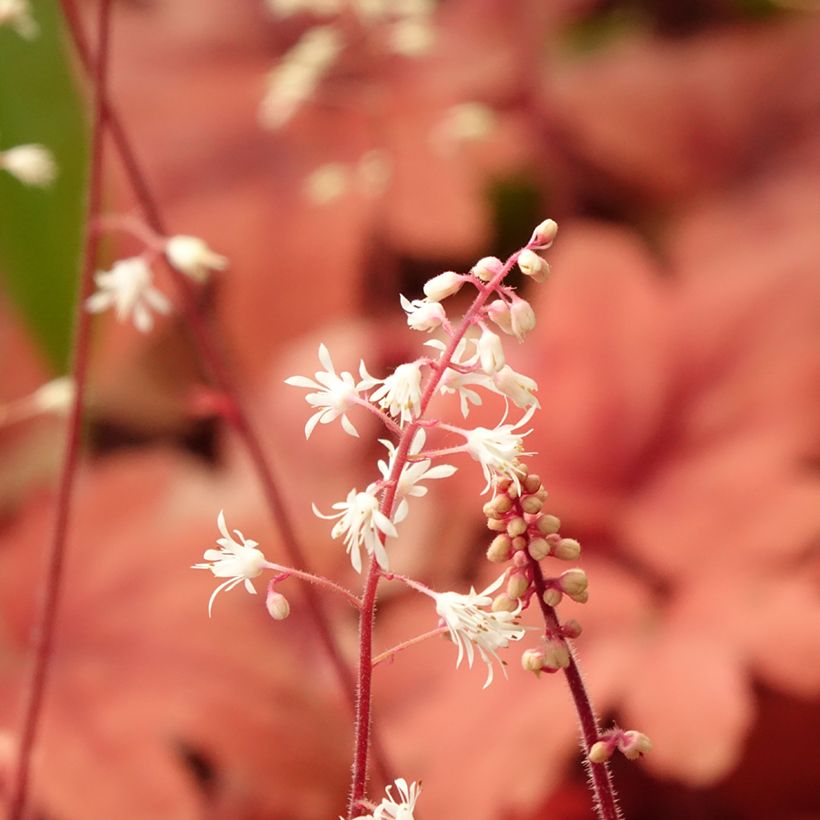



Flowering
Foliage
Plant habit
Botanical data
(x) Heucherella
Buttered Rum
Saxifragaceae
Foamy Bells
Cultivar or hybrid
Other Tiarellas and Heucherellas
View all →Planting and care
Heucherella can be planted in spring or autumn in place or in a container. It prefers shaded or semi-shaded positions and moist soil. Therefore, make sure to water it if the summer following its planting is particularly dry or mulch the base.
On the other hand, it does not tolerate scorching sun. It will tolerate sun or heat if its roots remain in moist soil.
Maintenance is limited to cleaning the foliage a little at the end of winter if it has dried out.
Planting period
Intended location
Care
Planting & care advice
-
, onOrder confirmed
Reply from on Promesse de fleurs
Similar products
Haven't found what you were looking for?
Hardiness is the lowest winter temperature a plant can endure without suffering serious damage or even dying. However, hardiness is affected by location (a sheltered area, such as a patio), protection (winter cover) and soil type (hardiness is improved by well-drained soil).

Photo Sharing Terms & Conditions
In order to encourage gardeners to interact and share their experiences, Promesse de fleurs offers various media enabling content to be uploaded onto its Site - in particular via the ‘Photo sharing’ module.
The User agrees to refrain from:
- Posting any content that is illegal, prejudicial, insulting, racist, inciteful to hatred, revisionist, contrary to public decency, that infringes on privacy or on the privacy rights of third parties, in particular the publicity rights of persons and goods, intellectual property rights, or the right to privacy.
- Submitting content on behalf of a third party;
- Impersonate the identity of a third party and/or publish any personal information about a third party;
In general, the User undertakes to refrain from any unethical behaviour.
All Content (in particular text, comments, files, images, photos, videos, creative works, etc.), which may be subject to property or intellectual property rights, image or other private rights, shall remain the property of the User, subject to the limited rights granted by the terms of the licence granted by Promesse de fleurs as stated below. Users are at liberty to publish or not to publish such Content on the Site, notably via the ‘Photo Sharing’ facility, and accept that this Content shall be made public and freely accessible, notably on the Internet.
Users further acknowledge, undertake to have ,and guarantee that they hold all necessary rights and permissions to publish such material on the Site, in particular with regard to the legislation in force pertaining to any privacy, property, intellectual property, image, or contractual rights, or rights of any other nature. By publishing such Content on the Site, Users acknowledge accepting full liability as publishers of the Content within the meaning of the law, and grant Promesse de fleurs, free of charge, an inclusive, worldwide licence for the said Content for the entire duration of its publication, including all reproduction, representation, up/downloading, displaying, performing, transmission, and storage rights.
Users also grant permission for their name to be linked to the Content and accept that this link may not always be made available.
By engaging in posting material, Users consent to their Content becoming automatically accessible on the Internet, in particular on other sites and/or blogs and/or web pages of the Promesse de fleurs site, including in particular social pages and the Promesse de fleurs catalogue.
Users may secure the removal of entrusted content free of charge by issuing a simple request via our contact form.
The flowering period indicated on our website applies to countries and regions located in USDA zone 8 (France, the United Kingdom, Ireland, the Netherlands, etc.)
It will vary according to where you live:
- In zones 9 to 10 (Italy, Spain, Greece, etc.), flowering will occur about 2 to 4 weeks earlier.
- In zones 6 to 7 (Germany, Poland, Slovenia, and lower mountainous regions), flowering will be delayed by 2 to 3 weeks.
- In zone 5 (Central Europe, Scandinavia), blooming will be delayed by 3 to 5 weeks.
In temperate climates, pruning of spring-flowering shrubs (forsythia, spireas, etc.) should be done just after flowering.
Pruning of summer-flowering shrubs (Indian Lilac, Perovskia, etc.) can be done in winter or spring.
In cold regions as well as with frost-sensitive plants, avoid pruning too early when severe frosts may still occur.
The planting period indicated on our website applies to countries and regions located in USDA zone 8 (France, United Kingdom, Ireland, Netherlands).
It will vary according to where you live:
- In Mediterranean zones (Marseille, Madrid, Milan, etc.), autumn and winter are the best planting periods.
- In continental zones (Strasbourg, Munich, Vienna, etc.), delay planting by 2 to 3 weeks in spring and bring it forward by 2 to 4 weeks in autumn.
- In mountainous regions (the Alps, Pyrenees, Carpathians, etc.), it is best to plant in late spring (May-June) or late summer (August-September).
The harvesting period indicated on our website applies to countries and regions in USDA zone 8 (France, England, Ireland, the Netherlands).
In colder areas (Scandinavia, Poland, Austria...) fruit and vegetable harvests are likely to be delayed by 3-4 weeks.
In warmer areas (Italy, Spain, Greece, etc.), harvesting will probably take place earlier, depending on weather conditions.
The sowing periods indicated on our website apply to countries and regions within USDA Zone 8 (France, UK, Ireland, Netherlands).
In colder areas (Scandinavia, Poland, Austria...), delay any outdoor sowing by 3-4 weeks, or sow under glass.
In warmer climes (Italy, Spain, Greece, etc.), bring outdoor sowing forward by a few weeks.































